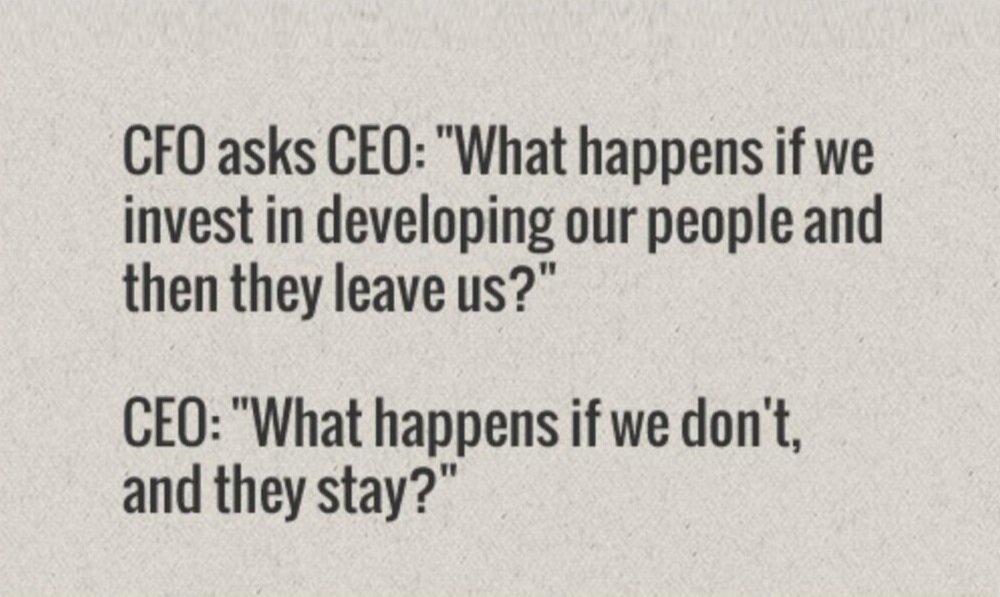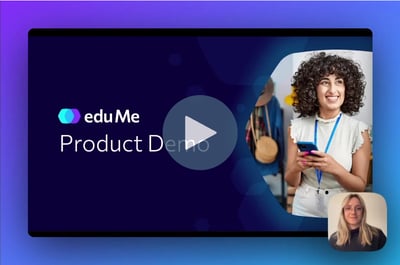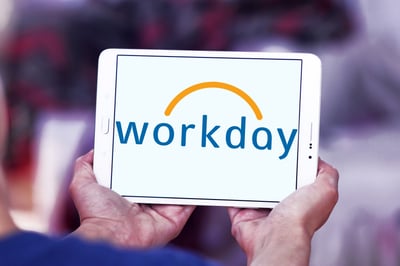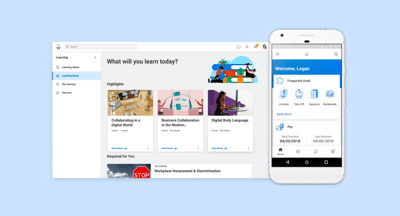The secret?
Continuous, lifelong or incremental learning. It’s the practice of gaining new skills, knowledge and information on an ongoing basis - continually and in the long-term. It can refer both to an individual’s or an organisation’s approach to learning.

Why bother with it?
If you don’t have a culture of continuous learning at your place of work, you should.
Why?
For your company to be successful, your workforce must be successful. To make them successful, you must empower them in a repeated and sustained way over time. And ease of access to relevant knowledge, in a retainable format, empowers them to perform at their very best 🚀
Millennials to the front
Who makes up the workforce? At an ever-increasing rate, it’s millennials. By 2025 they will grow to make up 75% of it. And as a generation, they value growth, learning and feeling a sense of purpose highly (sometimes more than they value remuneration!).
In 2016, Gallup found 87% of millennials thought professional development was important, and 59% took opportunities to learn and grow into account when deciding who to work for.

But millennial or not, ongoing learning is valued across the generational board - 94% of employees would stay at a company longer if it invested in their learning and development.
Cost, retention and staying competitive
Continuous learning has its cost benefits.
New hire turnover is real - failing to retain people isn’t a once in a blue moon occurrence. When an employee feels disillusioned, they leave. 20% of new hires quit before day 45.
And companies bleed between $3,000 and $18,000 per unretained hire. Don’t fancy spending $18,000 on rehiring and retraining? Nor would we…

A possibly more nightmarish scenario is when employees are disillusioned and don’t leave, costing you silently.
Prioritising employee learning also gives you a competitive advantage in a time where technology, and industry alongside it, are rapidly evolving.
If you successfully equip your people with the knowledge they need to excel, they become flexible in responding to industry and technological change. They are able to leverage new technology and skills acquired to their greatest potential, keeping you ahead of the curve.
If you successfully equip your people with the knowledge they need to excel, they become flexible in responding to industry and technological change.
When your approach to learning is static and not seen as a priority, you will lose out as your competitors edge ahead.
Beyond cost benefit
Financials aside, getting the right knowledge, to the right people, at the right time, empowers them.
This has a snowball effect: empowered employees are motivated and engaged. Engaged employees feel invested in their place of work, creating feelings of community. Feelings of community and belonging breed loyalty, improve productivity and reduce absenteeism.
Retaining and developing your existing pool of talent equals a satisfied workforce aligned with your mission, who feel a sense of purpose and derive significance from the work they do. Word also travels - if you are known as an employer who invests in employee upskilling and wellbeing you are likely to attract new people more easily.
The key to a successful workforce is successful people. By making knowledge accessible, you empower employees. In its absence, innovation is stifled and your business stagnates.
The bottom line is - by investing in employees’ success, they become empowered. When they are empowered, you are set up to achieve Workforce Success. Workforce Success secures the health and longevity of your company.
What can you do to implement continuous learning?
To obtain new knowledge, ideas and skills that will give your business a competitive advantage, employees need to be challenged and receive new information in a repeated and consistent manner over time.

Repetition and consistency is key - in order to retain information and combat the forgetting curve.
The forgetting curve dictates that if no effort is made at “spaced repetition” (i.e. reviewing learned material after increasingly large gaps in time), people only retain about half of the original information after a few days.
1. Start as you mean to go on
An employee’s learning journey begins before they accept a job offer. Preboard your employees to curb "new hire turnover" and foster loyalty. This can take the form of inviting them to team huddles, sending over light reading and checking in with them ahead of their start date.
By investing time and resources in their personal development from the get-go during onboarding, it highlights learning as a business priority and consolidates it as a habit.
2. Getting managers on board
For continuous learning to be rolled out successfully, everyone needs to be on the same page. And managers are the ‘missing link’.
Having involved managers is the most effective way to break through to employees and drive learner engagement. 46% of employees discovered learning programs through managers or leadership and 75% of employees would complete learning that had been assigned by their manager.

Leaders should practice what they preach and lead by example - an employee won’t be engaged if you aren’t. By enthusiastically supporting new learning initiatives, employees will feel inspired to follow suit.
As a manager, you can encourage your people to set aside time from daily tasks to devote to new learning.
3. Creating a plan
The appropriate plan of action for your organisation will differ based on individual business needs.
A good place to start is by evaluating your existing systems. You will then be able to identify gaps in knowledge, skills and departmental weaknesses, which you can use as a compass for improvement. Or maybe you already have certain goals in mind and prefer to work backwards.
Then it comes to choosing the most favourable way to deliver information, communication or training to your employees. Some considerations would be: the size of your organisation, the demographic of your workforce and the nature of your industry.
Which leads us on to...
4. Using the right technology
Who and where are you workforce? Are they office-based or remote? Largely Millennial or not?
Consider this scenario: Janiece works in a Sales team of five who all commute to the same office, in the same city and sit side-by-side for 8 hours a day. They have team huddles and 1-2-1s. In this instance, a practical approach to training, communicating and engaging Kelly and her colleagues could be face-to-face training.
Now, this one: Sergiu and his 5,000 strong team all do the same job. Let’s say this job is ferrying people like you and me around. They work at different hours and operate in different locations. They’ve never met each other and never will.

They don’t commute to an office, where their manager sits beside them, and they don’t have chats around the water cooler. They are deskless, dispersed and can grow to feel disgruntled. Training, communicating and engaging Sergiu and his colleagues face-to-face is not an option.
Signs point to the future of work resembling a situation more like the latter - Sergiu’s.
In this instance, the optimal solution to creating a continuous learning culture is: microlearning, delivered to smartphones at the point of need and in bite-sized chunks.
Though face-to-face might make sense for your small business, it still bears limitations- it’s not trackable, it’s not standardised (different people have different teaching styles) and is not effective at scale.
By making learning ‘on-demand’ i.e. providing people with information at their point of need, you contextualise the knowledge you’ve provided them with. It’s more immediately applicable, improving retention. ‘Doing’ is an important step in the learning process.
5. Rewarding learning
How best to reward learners will depend which medium you are using to deploy information.
If you’re delivering mobile learning, Gamification is a popular way to do this. Gamification stimulates learners by rewarding them. Rewards can be anything as simple as a trophy popping up upon completion of a question, points gained, or advancing to a next ‘level’.

Even though these rewards are immaterial, they incentivise learning by making it fun. Achieving something positive releases dopamine and increases the engagement of the learner. Gamification features increase employee engagement by up to 60%. Engaged learners are more motivated. This motivation makes them more likely to complete follow-up or new learning eagerly, quickly and successfully.
By employing reward systems into learning initiatives you help build positive mental associations with the learning process and enjoyment.
6. Measurement
So you have dispersed all the right information, at the right time, to the right people and in a format that is optimal for your company. Great! Now what?
Delivering training is futile if not followed-up.
Who benefited? How much did they benefit? Where did they stumble and where did they excel? Where do they need to improve? Is it an issue on my end - can I improve the delivery, format or timing of the learning?

To not ask these questions means the information you went to the effort of compiling was sent out in vain. Remember the forgetting curve?
Taking time to take stock is essential to successfully implemented continuous learning - the results of past learning will inform the future learning you create.
7. And, repeat
Now you have your retained employees, the right tool to engage them with, aligned managers and data on how well your employees understand the learning you’re sending them. The next step? Revise, rinse and repeat!
This can be a redeployment of the same information, to improve performance in the event of poor results or to up knowledge retention. Or, whatever new information you next need known.
The takeaway...
Individually and organisationally, continuous learning is a win-win - no one fails to benefit.

Continuous learning benefits employers by...
-
Boosting engagement and by extension, productivity (by 37%)
-
Improving employee loyalty and by extension, retention
-
Staying competitive by facilitating employee innovation
-
Cutting costs in the long-term
-
Attracting new talent more easily
-
Increasing the likelihood of innovation (by 92%)
-
Achieving Customer Success, as a by-product of having achieved Workforce Success
And it benefits employees by...
-
Creating personal fulfilment and enrichment
-
Instilling a sense of purpose
-
Paving the way for perks, promotions and pay rises
-
Staying competitive in the job market







